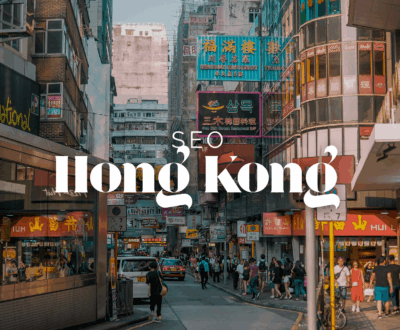Почему поисковые системы предпочитают удобные для пользователя веб-сайты: пересечение SEO и UX
- 23 ноября 2025 г.
- Последние статьи о тенденциях и советах SEO
Поисковые системы всё больше стирают грань между SEO и UX, явно поощряя сайты, которые радуют пользователей. Сегодня фундаментальный факт SEO заключается в том, что алгоритмы Google ценят сигналы пользовательского опыта наряду с релевантностью. В руководстве Google по удобству использования страниц особое внимание уделяется таким факторам, как быстрая загрузка, удобство для мобильных устройств, безопасное соединение и лаконичный дизайн. Основные показатели веб-страниц и другие факторы, влияющие на удобство использования страниц, влияют на ранжирование, и ожидается, что сайты будут оптимизированы для мобильных устройств, будут использовать HTTPS и избегать навязчивых межстраничных объявлений. На практике это означает, что любые эффективные SEO-сервис Google необходимо интегрировать лучшие практики UX, а не только оптимизацию ключевых слов, поскольку поисковые системы отдают приоритет удобным для пользователя веб-сайтам, а не плохо спроектированным.

Основная причина, по которой поисковые системы отдают приоритет UX, проста: довольные пользователи обеспечивают поисковым системам прибыль. Обновление Google по скорости загрузки мобильных устройств в 2018 году подтвердило, что скорость загрузки страниц является фактором ранжирования на мобильных устройствах. Исследования показывают, что 53% мобильных посетителей покидают страницу, загрузка которой занимает более трёх секунд. Напротив, сайты, загружающиеся в течение пяти секунд, характеризуются значительно большей продолжительностью сеанса и более низким показателем отказов. Эти выводы подтверждают ещё один важный факт. факт о SEO: быстро загружающиеся страницы не только повышают вовлечённость, но и косвенно повышают рейтинг, влияя на показатели отказов и время, проведённое на сайте. Поэтому оптимизация основных веб-показателей — максимальной отрисовки контента, взаимодействия до следующей отрисовки и кумулятивного сдвига макета — стала основополагающим компонентом современного SEO.
Скорость загрузки страниц и основные веб-показатели
Поисковые системы явно используют метрики производительности в качестве сигналов ранжирования. Скорость загрузки страницы является фактором мобильного ранжирования с 2018 года. Сегодня Core Web Vitals измеряет загрузку (LCP), интерактивность (INP/FID) и визуальную стабильность (CLS), и они формализуют фокус Google на производительности. Google рекомендует LCP в пределах 2,5 секунд и оценку CLS ниже 0,1 для хорошего пользовательского опыта. Каждая секунда задержки может отрицательно повлиять на конверсии и вовлечённость. Одна секунда задержки может значительно снизить конверсии, в то время как более длительные задержки приводят к массовому отказу от использования. Таким образом, SEO — это не только ключевые слова — оно включает в себя сжатие изображений, минимизацию кода и использование кэширования для быстрой загрузки страниц. Такие инструменты, как PageSpeed Insights и Chrome UX Report, помогают диагностировать проблемы производительности, отражая, насколько глубоко UX связан с SEO.
Мобильный дизайн и адаптивный дизайн
Поскольку более половины всех поисковых запросов приходится на мобильные устройства, адаптивность для мобильных устройств является как необходимостью для пользовательского опыта (UX), так и требованием SEO. Обновление Google «Mobilegeddon» повысило рейтинг страниц, оптимизированных для мобильных устройств, в то время как сайты, не оптимизированные для мобильных устройств, снизились. Теперь Google использует индексацию, ориентированную на мобильные устройства, то есть мобильная версия сайта является основным критерием его ранжирования. Поэтому адаптивный дизайн крайне важен. Обеспечение паритета контента между десктопами и мобильными устройствами, использование гибких макетов, быстрой загрузки изображений и сенсорной навигации являются ключевыми факторами. Сайты, игнорирующие мобильный UX, рискуют как низкой вовлечённостью, так и низкой видимостью в результатах поиска.
Доступность и инклюзивный UX
Функции доступности, часто рассматриваемые как улучшения пользовательского опыта (UX), также способствуют SEO. Описательный альтернативный текст помогает пользователям, использующим программы чтения с экрана, и позволяет поисковым системам распознавать содержимое изображений. Правильно обозначенные поля форм, семантические заголовки и содержательные тексты ссылок улучшают взаимодействие с пользователем, одновременно помогая поисковым системам более эффективно индексировать страницы. Доступные элементы дизайна, такие как высокая контрастность, читабельные шрифты, изменяемый размер текста и навигация с помощью клавиатуры, улучшают UX-метрики, такие как время, проведенное на странице, и удовлетворенность, которые поисковые системы косвенно поощряют.
Навигация, чистый дизайн и вовлеченность
Интуитивно понятный макет сайта — ещё один фактор UX, влияющий на SEO. Навигация «хлебные крошки» помогает пользователям понять, где они находятся на сайте, и помогает поисковым системам интерпретировать иерархию. Чистый, лаконичный дизайн снижает показатель отказов. Сложная навигация или низкое удобство использования могут косвенно снизить рейтинг, сокращая время, проведённое на сайте, и количество просмотренных страниц. RankBrain, система машинного обучения Google, учится на вовлечённости пользователей, делая UX ещё более целостным. Хорошо организованное меню, понятные призывы к действию и логичные внутренние ссылки эффективно направляют пользователей, помогая поисковым роботам находить контент. Отсутствие чрезмерного количества всплывающих окон и навязчивой рекламы гарантирует отсутствие раздражения посетителей. Структурирование контента с чёткими заголовками, лаконичными абзацами и читабельными шрифтами поддерживает интерес пользователей и сигнализирует Google о высоком качестве страницы.
Интеграция UX в SEO-стратегию
Современное SEO учитывает принципы UX на каждом этапе. Ключевые рекомендации включают:
- Оптимизация производительности: Отдайте приоритет быстрой загрузке страниц с помощью сжатия изображений, CDN и достижения целевых показателей Core Web Vitals.
- Обеспечение удобства использования на мобильных устройствах: Используйте адаптивный дизайн, чтобы одна версия сайта обслуживала все устройства; от этого зависит индексация в первую очередь для мобильных устройств.
- Улучшить доступность: Добавьте осмысленный альтернативный текст, используйте семантический HTML и следуйте рекомендациям по обеспечению доступности, которые удобны как для пользователей, так и для поисковых роботов.
- Дизайн для пользователей: Сделайте навигацию простой, сократите количество навязчивых элементов и поддерживайте безопасные соединения.
- Мониторинг показателей UX: Отслеживайте показатели отказов, поток пользователей и основные веб-показатели с помощью инструментов аналитики и повышения эффективности, а затем связывайте эти тенденции с рейтингами поиска.
Заключение
Даже комплексная SEO-стратегия не может игнорировать UX. Эффективные SEO-команды теперь тесно сотрудничают с дизайнерами и разработчиками, чтобы гарантировать, что каждый элемент страницы отвечает реальным потребностям пользователя. Сочетая исследование ключевых слов с улучшениями UX, такими как быстрые серверы, доступная верстка и понятная навигация, сайты могут удовлетворить как пользователей, так и поисковые системы. В конечном счёте, поисковые системы стремятся рекомендовать удобные для пользователя страницы — это критически важный факт для любого современного маркетолога.
О нас и этом блоге
Мы — компания цифрового маркетинга, которая стремится помочь нашим клиентам достичь отличных результатов в нескольких ключевых областях.
Запросить бесплатную смету
Мы предлагаем профессиональные услуги SEO, которые помогают веб-сайтам значительно повысить свой органический рейтинг поиска, чтобы конкурировать за самые высокие рейтинги, даже если речь идет о высококонкурентных ключевых словах.
Подпишитесь на нашу рассылку!
Больше из нашего блога
Посмотреть все сообщенияСвежие записи
- Манипулирование рейтингом и трафиком в SEMrush: действительно ли возможно обмануть систему, используя эти показатели? 12 декабря 2025 г.
- Расширение бизнеса в Азии: ведущие страны и глобальные стратегии SEO 9 декабря 2025 г.
- Бизнес в Гонконге: малоизвестные стратегии SEO для расширения в Европе и Америке 5 декабря 2025 г.








